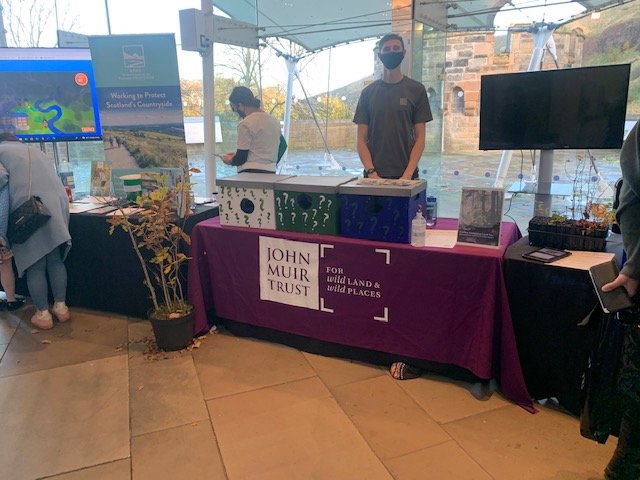Climate Science: Dynamic Earth Celebrates COP26
To celebrate COP26, Dynamic Earth hosted a Climate Science Showcase Day and invited the public to meet scientists studying the changing climate and its effects on the planet – all the way from the ocean floor to the air in the atmosphere.
The event, which was held on Saturday 6th November, is part of Dynamic Earth’s Operation Earth programme, a national STEM engagement scheme, connecting families with school-aged children to the Natural Environment Research Council’s world-leading environmental science research.
Science Engagement Officer, Laura Gordon, said: “Our aim was for people to meet a scientist, and be able to ask them important questions about climate science and about COP26.
“A lot of what we do is for school-aged children, predominantly those in primary school, and their families but all the scientists who come here are for any age. What often happens is that kids get excited about or immersed in an activity and that brings their parents in, which encourages the whole family to get involved and the adults learn something new too.
“We’re really pleased with how today has turned out. There’s been a lovely buzz about the place, and children have really been enjoying engaging with science. It’s amazing how much children are already in tune with what’s happening with the planet.”
Scientists and organisations including iAtlantic, the Scottish Association for Marine Science (SAMS), Marine Scotland, Marine Conservation Society, and the John Muir Trust, encouraged children – and adults – to take part in a range of activities and to get up close and personal with the technology scientists are using to explore the world such as deep-sea landers and autonomous underwater robots.
John Muir Trust at the Climate Science Dynamic Earth event. Photo by Victoria MacLeod
When asked about whether Dynamic Earth will be hosting more of these types of events in the future, Laura said: “The next project we’re going to be working on is called Discovering the Deep and it’s a two-year project all about the deep sea and within that, we plan on having more meet the scientist days. Many of the scientists we work with work on how the deep sea is affected by the climate, so climate change will be a part of that too.
“Being able to engage the public with climate science and what is going on in the world is part of our core mission now, it’s central to everything we do and the projects we work on. We’re keen to get scientists speaking to the public, so today is a culmination of several of our aims. Hopefully, events such as this will continue into the future.”
The showcase took place under the art installation ‘Gaia’. Photo by Victoria MacLeod
Gaia
The showcase was set under the striking artwork, Gaia, a revolving scale model of Earth, which enabled visitors to view the planet from all angles.
Measuring seven metres in diameter and featuring 120dpi detailed NASA imagery of the earth’s surface, Gaia, was created by British visual artist Luke Jerram. The artwork is 1.8 million times smaller than the actual earth, with one centimetre of the globe representing 18km of Earth’s surface.
The travelling artwork comes with its own soundtrack, a specially made surround sound composition by BAFTA award-winning composer Dan Jones.
The installation aims to create a sense of the ‘Overview Effect,’ which was first described by author Frank White in 1987. Common features of this experience for astronauts are a feeling of awe for the planet and a renewed sense of responsibility for taking care of the environment. Gaia aims to provide the viewer with a similar perspective and a sense that we are all interconnected and that we have a responsibility towards each other and the planet.
Speaking of his artwork, Luke said: “I hope visitors to Gaia get to see the earth as if from space; an incredibly beautiful and precious place. An ecosystem we urgently need to look after – our only home.”


